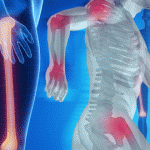Results from a recent study suggest that the combination of bone-morphogenetic protein-7 (BMP7) and lactoferricin B (LfcinB) may be a useful treatment for disc degeneration.
LfcinB is a 25-amino acid lactoferrin (Lf) peptide that has antiinflammatory and anticancer properties. Lf is found in high concentrations in colostrum. Commercial Lf is typically isolated from bovine milk.
Michael B. Ellman, MD, at Rush University Medical Center in Chicago, and colleagues published their LfcinB research in Gene.1 The work builds on the team’s previous research describing the anabolic and catabolic mediators of disc degeneration. The previous studies suggested that LfcinB-mediated activation of the ERK/MAPK-Sp1 axis is important for disc nucleus pulposus cells.
Other researchers have published promising results indicating that therapies with individual growth factors such as Lf, LfcinB, and BMP7 may be useful in the treatment of musculoskeletal diseases. For example, BMP7 activity in the vertebral disc is enhanced by insulin-like growth factor–a (IGF-1), and the result is a shift in homeostasis to a pro-anabolic state.
In the current study, the investigators describe the molecular mechanism by which LfcinB enhances biological anabolism when combined with BMP7. While the combined effect of LfcinB and BMP7 is significant, the research was performed in vitro and work still needs to be done to determine the efficacy of the treatment in vivo. The in vivo study will soon be underway.
“We anticipate a positive systemic impact that may prevent or decrease further joint deterioration,” explained Hee-Jeong Im, PhD, corresponding author of the study. “The good thing about lactoferrin/lactoferricin is that you can take it orally and you don’t have to inject.”
Both LfcinB and Lf are stable and inexpensive. They also have a good safety profile.
Dr. Im explained that her broader interest is in using LfcinB to enhance the probiotic system. “We are interested in adjuvant therapies including those involving probiotics because the mechanistic differences in their actions promote synergism,” elaborated Dr. Im. She is hopeful that a combination of LfcinB and probiotics can improve joint health.
Dr. Im described the low-grade inflammation that underscores not just rheumatoid arthritis, but also osteoarthritis (OA). Many patients with OA have excess fat tissue that produces excess inflammatory cytokines thereby contributing to disease. The hope is that LfcinB and/or Lf can be ingested as a form of preventive medicine to counter the induction of low-grade inflammation in the body. If LfcinB is able to prevent systemic low-grade inflammation, it may also be able to influence the course of other diseases, including Alzheimer’s disease and cancer.

